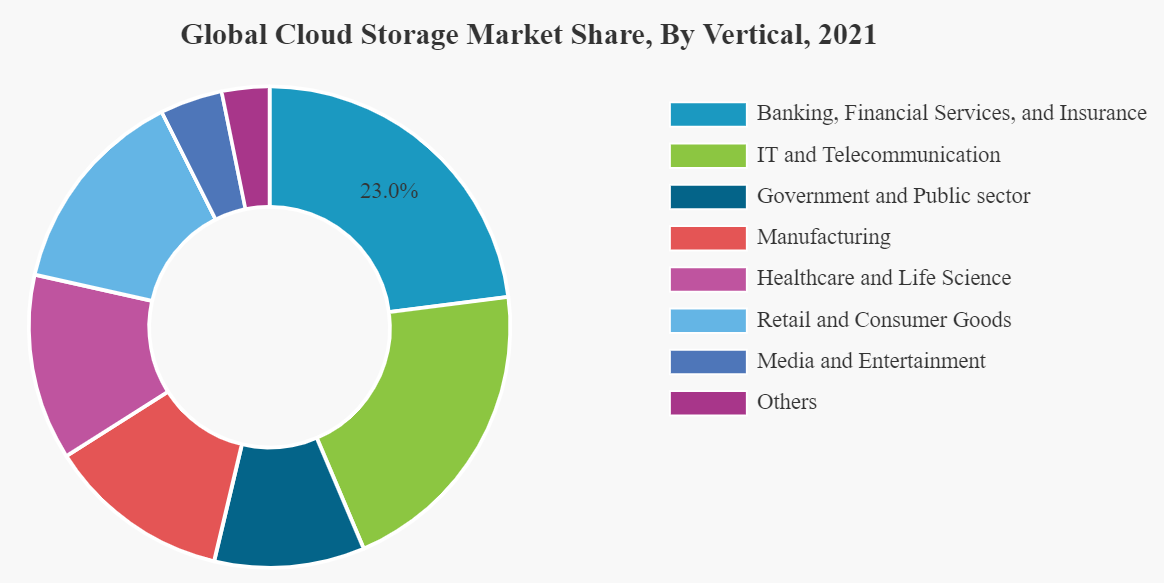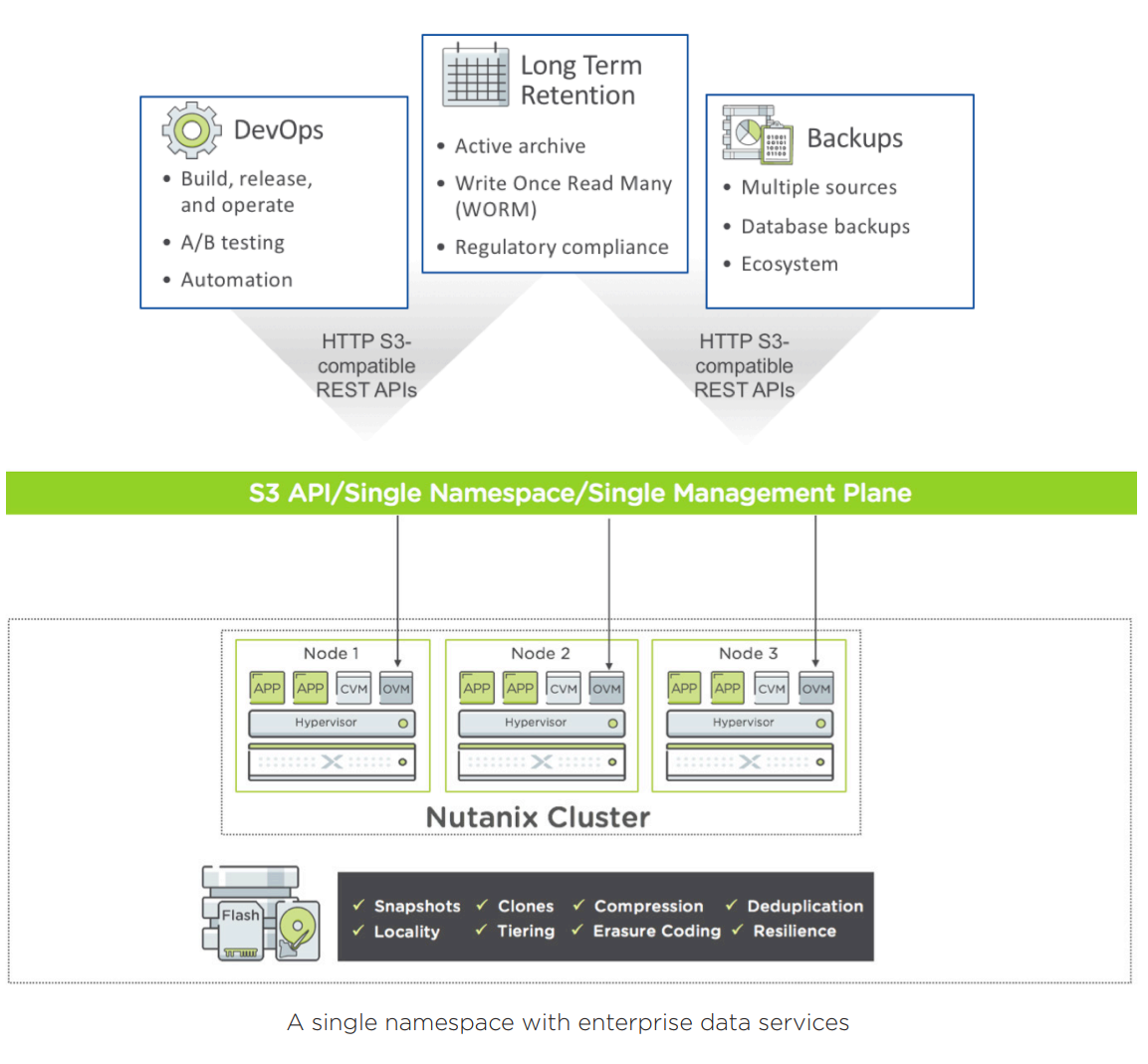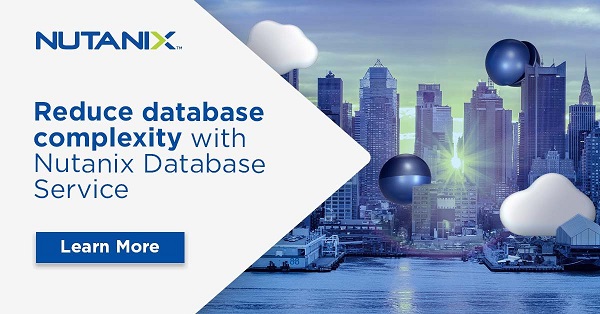There’s no stopping the incessant creation and sharing of data. While most data created today has a short and finite usage lifetime, it is rarely destroyed. Data continues to accumulate in the annals of business and organizational storage resources.
“Today, applications and data are business critical,” said Lee Caswell, senior vice president of product and solutions marketing at Nutanix.
He said some analysts expect to see half of a billion applications by the end of 2023, which is how many were created in the past 40 years. That number is expected to grow by 50% by 2026.
“The data these apps create and use can bring tremendous value to companies,” Lee said.
Dealing with skyrocketing data storage demands is a top challenge for many organizations. However, as with other IT resources, cloud technology is proving to be a redeemer.
“New technologies make it easier for IT teams to facilitate application developers, who are creating apps aimed at bringing more value to the company,” Caswell said.
“These new apps are usually additive and require consistent access to data, whether that data is stored as files, blocks or objects - and whether it lives in the public cloud, the data center or at the edge,” he said.
The cloud storage market was worth $70 billion in 2021. It is expected to reach $78 billion by the end of 2022 then grow to an eye-popping $183 billion by 2027, according to a Markets and Markets report.
As business models evolve, there is a dire need for database models that keep up with the pace of data creation while dealing with raw and unstructured data formats. The number and types of databases (including relational, non-relational, open source, wide-column, key-value, graph, time series, cloud-based, search engine, in-memory, spatial, document, multi-model, and so on) continue to grow, leading DBAs and IT leaders to look for flexibility, interoperability, simplicity, mobility and reliability. There is an urgent need for upgrading legacy database platforms and scaling storage infrastructure without disrupting routine database operations.
“Customers want to reduce the risk, effort and cost of operating their database fleets, which typically consist of thousands of databases,” said Jeremy Launier, Sr. Director of Product Management at Nutanix. “They want to run both proprietary and open-source databases. They want to enable developers to use databases without bothering DBAs. They want to retain full control of their database servers. They need to do all of this while having the flexibility to run on their cloud of choice, in the most cost-effective environment that meets business requirements for a given set of applications, in a given region, and at a given consumption level.”
Might be easier to fit the Hulk into a baby stroller and make him comfortable, wouldn’t it?
The key, according to Launier, is removing complexity, speeding up database provisioning and providing self-service capabilities to application developers. Enter the world of distributed cloud databases – collections of operational datasets housed across multiple physical locations including on-prem data centers, hybrid or multicloud environments.
Database Management In The Hybrid Cloud
More and more organizations are finding that using cloud-based tools and solutions for database operations maximizes resource utilization, reduces TCO and improves agility. These facilitate the creation of smart datasets and fulfil the promise of big data.

Source: Fortune Business Insights
It’s important to understand the advantages cloud storage brings to business and organizational settings, what forms it takes, how it is implemented, and how it integrates with the rest of the IT architecture.
The What of Cloud Storage: Evolution and Architecture
Cloud storage is the storage of data in logical “pools” that might span multiple servers, storage devices, arrays or networks in a cloud data center (or multiple data centers spread across multiple geographic regions). The physical environment is owned by the cloud service provider, but the hardware is abstracted to the end user or client organization. The service provider assumes the responsibility for the availability, accessibility, security and scalability of the data.
The first instance of cloud storage was probably when CompuServe offered its customers a small amount of disk space to upload and store their files way back in 1983. In 1994, AT&T offered the first web-based file storage option (as part of its broader service to businesses). In 2005, Box.com (then Box.net) came up with the first SaaS platform for file sharing. A deluge of cloud storage and file sharing services followed.
In 2006, Amazon introduced their wildly popular cloud storage service AWS S3, which went on to become the supplier for other file hosting services such as Dropbox as well as web-based media hosting services. The rest, as they say, is history.
Cloud storage, like other aspects of cloud computing, is built on the concept of virtualization of data and infrastructure. It retains all the inherent strengths of the cloud – elasticity, multi-tenancy, scalability, instant provisioning, versioning, metering, redundancy and fault tolerance. It can be deployed as a public cloud (SaaS such as Dropbox or Google Drive), hosted in a private cloud (for granular access control and compliance with data privacy laws), or set up across multiple architectures in a hybrid cloud environment or hyperconverged infrastructure (HCI).
Hybrid cloud storage allows the organization to choose what to store locally or on-prem and what to upload to the public cloud. This simplifies backup, disaster recovery and compliance to a great extent.
Within a cloud environment, an organization has access to three fundamental types of storage – file storage, block storage and object storage (with distributed file systems) – whichever works best for the workloads that the organization is running. There are solutions like Nutanix Unified Storage (NUS) that consolidate block, file and object storage into a unified data management platform. NUS, for example, provides easy access to structured and unstructured data and is built for high performance, seamless scale and security against ransomware attacks – whether data is in the core, cloud, or edge.
File storage is what users have been accustomed to as individuals all along – file systems that traditionally existed in PCs and LANs. User directories, media stores, content repositories, development environments, and network attached storage (NAS) servers fall within this category. Amazon’s Elastic File System (EFS) is an example of file storage in the cloud.
Block storage is the cloud equivalent of a storage area network (SAN) or direct attached storage (DAS). It is optimal for high-performance enterprise applications and databases that need dedicated storage with low latency for each host. Amazon’s Elastic Block Store (EBS) service is a good example.
Object storage can be deployed with almost any cloud storage infrastructure, platform or technology stack. Object storage solutions such as Amazon S3 provide the scale and flexibility needed for developing cloud-native applications from scratch. They allow workloads such as analytics and archives to take advantage of the scalability and meta information provided by object storage.
Nutanix Objects is an example of a solution that offers secure S3-compatible storage at massive scale. It’s designed to simplify storage operations while offering high performance for cloud-native, big data analytics and deep archive workloads. It uses an S3-compatible REST API interface to handle terabytes to petabytes of unstructured data, all from a single namespace.
The Why of Cloud Storage: Benefits
Cloud storage holds umpteen advantages for the enterprise over local hardware-based storage.
Reduced TCO: Companies pay only for the storage they use; that too on a periodic basis. While this doesn’t technically mean lesser costs, it replaces CAPEX (upfront expenditure) with OPEX (ongoing expenditure) and allows for better planning and “just right” spending.
Energy savings: Data centers and servers with large storage capacity consume significant space, power and other utilities. Using cloud storage cuts down energy consumption as a whole.
Speed of deployment: When cloud storage is available, lack of resources or infrastructure can never slow down development or operations teams. Secure and adequate storage is quickly provisioned on demand.
No maintenance: Yes, it’s “no maintenance,” not low-maintenance. Upgrades, troubleshooting, repair, reconfigurations, maintenance, planning and purchasing of storage are all offloaded to the cloud service provider.
Information management: Centralizing storage in the cloud allows admins to implement database and data lifecycle management policies across the IT environment.
Flexibility: With hybrid cloud storage, organizations can choose to put data on-premises in a data center, or on a private or public cloud (or on different public clouds) according to its criticality and processing needs. This also helps in conforming to security and compliance requirements.
Redundancy: The cloud automates data management tasks such as backup and archiving. Backups can be pushed to specialized cloud providers and restored on demand. Both of these work on a pay-as-you-go basis, allowing for better IT cost optimization.
Disaster recovery: Disaster recovery on the cloud is notably simple, faster and cost-effective compared to traditional means. “Cloud has changed the economics of disaster recovery. Some years back, only the biggest organizations could fully implement DR because it was so expensive to duplicate infrastructure and systems, even if it was through a third-party provider. The pendulum has definitely swung towards disaster recovery in the cloud and DRaaS,” said Phil Goodwin, Research Director at IDC.
The How of Cloud Storage: Choosing a Provider
As is the case with everything else in the cloud, getting the best outcomes with cloud storage depends on the organization’s overall cloud strategy as well as their choice of service providers.
“Storage and data must go hand in hand. So while a cloud storage strategy is important, equally important is an understanding of the data being stored,” said Seth Robinson, VP of Industry Research at CompTIA.
When CIOs understand their data, they’re better placed to analyze platforms, resources and services that will help them maximize their capabilities. This makes the process of choosing a cloud provider simpler. Some factors to consider include:
Scalability: The ability of the provider to provision different types of storage on demand matters for scaling storage up and down.
Costs: The packages on offer, additional charges and latitude in renegotiating contracts is critical to saving costs.
Speed: Latency in accessing data can smother productivity at best and break businesses at worst
Availability: The acceptable threshold of downtime depends on the criticality of the data.
Integration: Data stored on one cloud system needs to be transferable to and accessible by users and applications that reside on another cloud or on-premises.
Security: Public cloud security is perhaps the biggest concern in choosing a provider. Since cloud vendors store individual and organizational data on a massive scale, they are prime targets for hackers. The number of locations at which data is stored (due to replication and redundancy), the number of networks over which data has to travel, the number of people who could potentially access the data, all increase the risk of unauthorized access in a cloud environment.
Longevity: Companies go bankrupt (or change their focus) all the time and cloud service providers are basically just companies.
Future-Ready Data Storage
Demand for cloud storage is constantly growing due to the explosion in unstructured data generated by IoT, AI, analytics and other modern technologies. The COVID-19 pandemic also accelerated the adoption of cloud storage because of employees’ need to create and access files remotely. At the same time, there are strong use cases for data storage both on-premises and at the edge.
“We should not be looking at cloud storage as a binary decision. Choose it when right. Define what cloud and on-premises can do for you,” said Steven Hill, former Sr. Analyst, Storage Technologies at 451 Research.
The answer lies in hybrid cloud storage – it lends the greatest amount of flexibility in leveraging the organization’s internal storage resources as well as choosing the best cloud provider for storing specific types of data.
Feature image by Pxfuel
Dipti Parmar is a marketing consultant and contributing writer to Nutanix. She’s a columnist for major tech and business publications such as IDG’s CIO.com, Adobe’s CMO.com, Entrepreneur Mag, and Inc. Follow Dipti on Twitter @dipTparmar or connect with her on LinkedIn for little specks of gold-dust-insights.
© 2022 Nutanix, Inc. All rights reserved. For additional legal information, please go here.







